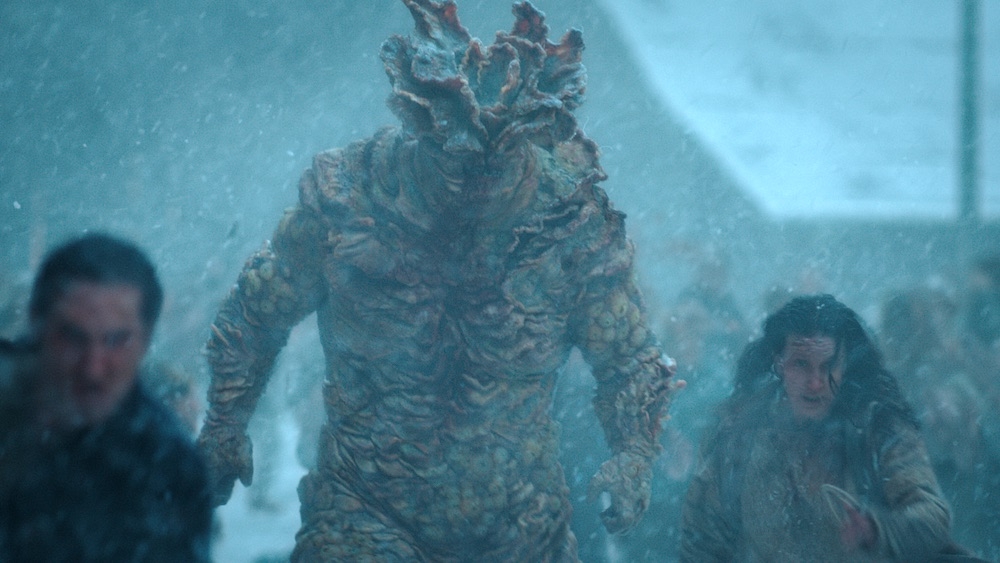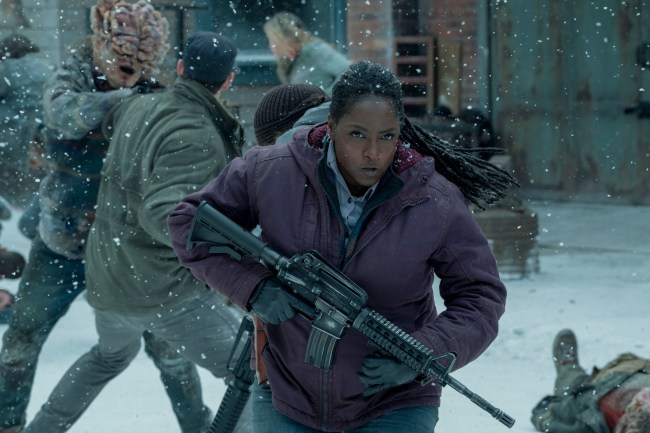[Editor’s Note: The following review contains spoilers for “The Last of Us” Season 2, Episode 2, “Through the Valley.”]
In movies and TV, zombies are scary due to their numbers. It doesn’t matter how fast you run, it doesn’t matter where you go, they’ll find you. They exist on such a massive scale that they become inevitable.
In archetypical zombie movies like George A. Romero’s “Dawn of the Dead,” the protagonists are trapped in an enclosed location surrounded by hordes of zombies whose only goal is to maul them to death. Yet those zombie hordes are just waiting outside. At most, they run like a mindless herd once they find a way in. These undead don’t plan, don’t strategize, and don’t even think. “The Last of Us” season two does something different in its second episode, and the result is a very different take on the walking dead than what we’ve seen both in the first season and even the game.
Well, an important distinction first. The zombies of “The Last of Us” are technically infected (with the fungus Cordyceps) rather than being reanimated corpses. This is important because they are not undead ghouls that rise from the grave, they’re not decomposing corpses that slowly fall apart. Instead, the Cordyceps keeps its victims very much alive, just slowly mutating until they become part of a great fungal network of big mushroom people. The first season of the HBO show took advantage of this distinction between undead zombies and infected by showcasing the different stages of the fungal infection and the different types of danger the creatures provide, from the clickers’ echolocation and hard-to-crack skulls to a hulking bloater’s massive size and strength.
In the second episode of the sophomore season, the show kicks things up a notch, taking the thrills of the fifth episode of the previous season and dialing the zombie action up to 11. First, a shot at the end of the premiere episode shows that a network of Cordyceps tendrils have wound themselves around the pipes of the safe haven of Jackson, Wyoming, signaling to all the infected nearby that it’s time to spread the good fungal word all around town.
From the first moment that we see the mass of infected through the blurry binoculars of the watchers on the walls of Jackson, the show takes a lot of care to establish the dynamic that we expect. Both director Mark Mylod and editor Timothy A. Good create a tense building rhythm of the defenders of Jackson getting ready — stocking flamethrowers and weapons, deploying rams on the production designer’s Don Macauley’s high walls, getting into position for an ambush — with the simple fury of infected running. Mindless zombies, right?
Not quite. Rather than just throw wave after wave of infected at the walls, the zombies quickly change tactics once they hit resistance and start reacting to their enemy. It is clear they were testing the town’s defenses, and when a section of the wall doesn’t break, they run away toward another part of the town. They are not retreating, but rather moving over to plan B — where the “B” stands for “Bloater.”

The Bloater acts like a living battering ram, smashing the gate until it bursts open and the horde can get inside the town. Sure, the infected don’t have siege weapons or a commander issuing orders, but it is clear this is different to what we’ve seen before. The editing bait-and-switch forces us as viewers to grapple with an entirely different kind of tension than we were expecting. The shock and dread that stunt coordinator Marny Eng is able to build simply by having his infected team (both actors and the actual army of infected) move with purpose, adjusting speed to terrain while still maintaining a zombified fury, makes every single infected dangerous, not just the horde of them.
The danger of the battle is further stressed by the framing choices that Mylod and veteran “House of the Dragon” cinematographer Catherine Goldschmidt make. For all his careful planning, Tommy (Gabriel Luna) is the one who ends up boxed into an alley looking up at a Bloater. Goldschmidt’s camera moves to follow him as he runs for a vantage point, with a slight shake to match Tommy’s frenzy, but stays pretty wide. At all times, we can see exactly the limits of the buildings and supplies, the too-few points of egress.
When Goldschmidt goes close, on the Bloater’s feet pushing through the fire and the pressure gauge of Tommy’s flamethrower fading, it’s as Tommy is backing into a corner physically, getting lower to the ground and closer, we intuitively understand, to death. “The Last of Us” is perfectly clear, visually, just how impossible it is to escape.
Remember the much meme-d scene from “World War Z” of the zombies clustering together like ants to form a ladder and climb up walls in that movie? That was the movie’s attempt at smart zombies, or at least a formidable force that could destroy the world, yet it fell short. The sack of Jackson in “The Last of Us” is, among many other things, the proper “World War Z” adaptation fans of that book wanted.

If “The Last of Us” team can be counted on for anything, it’s to give us what we want in both the best and the worst way. Eng and his stunt team build on the grim choreography of the Kansas City battle in Episode 5 of Season 1 to show just how much writhing, terrifying danger there is when a group of infected gets in among a human population. The wide shots of Tommy stepping onto the main street of Jackson, burning in the snow, are a riot of gore and desperate hand-to-hand action that neither our focus character nor any but the most dedicated rewatch viewers will fully catch. But the clever compositions and the intricate fightwork give us the same visceral sense of being in the middle of that maelstrom, and of what it means when all those German Shepherds come running to Tommy’s rescue.
As an episode of TV, the battle of Jackson is one of the most impressive displays of cinematography and stunt work in recent years, up there with the best moments of “Game of Thrones.” It is something fresh in the genre, a large-scale siege battle featuring an army of speechless ghouls that are very clearly not mindless monsters.
It’s the best thing “The Last of Us” has ever done, and one hell of a zombie attack.
“The Last of Us” is streaming on Max.






